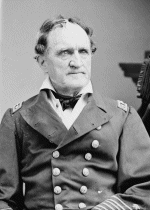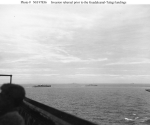NavSource Online: Amphibious Photo Archive

Lost to enemy action, 4 September 1942
USS Gregory (APD-3)
ex
USS Gregory (DD-82) (1920 - 1940)
USS Gregory (Destroyer #82) (1918 - 1920)




1921 International Radio Call Sign:
Nan - Able - Jig - Rush
NAJR
Awards, Citations and Campaign Ribbons
Precedence of awards is from top to bottom, left to right
Top Row - Combat Action Ribbon (retroactive) - World War I Victory Medal (with bronze star in lieu of Destroyer clasp) - American Defense Service Medal (with bronze star in lieu of Fleet clasp)
Bottom Row - American Campaign Medal - Asiatic-Pacific Campaign Medal (2) - World War II Victory Medal
Individual Awards
Silver StarSilver Star (CO LCDR. Harry F. Bauer, USN)*, 4 September 1942
Purple Heart 2 September 1942)
Wickes Class Destroyer:
Laid down, 25 August 1917, at Fore River Ship Building Co, Quincy, MA.
Launched, 27 January 1918
Commissioned USS Gregory (Destroyer #82), 1 June 1918, CDR. Arthur P. Fairfield in command
Designated (DD-82), 17 July 1920
Decommissioned, 7 July 1922
Converted to a High-speed Transport
Recommissioned USS Gregory (APD-3), 4 November 1940
During WWII USS Gregory (APD-3) was assigned to the Asiatic-Pacific Theater, Commander South Pacific Force and South Pacific Area:
TransDiv Twelve, CDR. Hugh W. Hadley, USN (22) and participated in the following campaigns:
Asiatic-Pacific Campaigns |
| Campaign and Dates |
Campaign and Dates |
| Guadalcanal - Tulagi landings, 7 to 9 August 1942
| Capture and Defense of Guadalcanal, 4 to 5 September 1942
|
Final Disposition, sunk by Japanese destroyers off Lunga Point, Guadalcanal, 4 September 1942
Struck from the Naval Register, 2 October 1942
USS Gregory earned two battle stars for service in World War II
Specifications:
Displacement 1,154 t. 1,600 t.(fl)
Length 314' 5"
Beam 30' 6"
Draft 9' 10"
Speed 35.2 kts.
Complement
Officers 8
Enlisted 98
Troop Accommodations
Officers 3
Enlisted 144
Boats 4 LCP(L) landing craft
Armament
three single 3"/50 dual purpose gun mounts
two single 40mm AA gun mounts
five single 20mm AA gun mounts
one depth charge rack
four depth charge projectors
Fuel Capacities
NSFO 2,380 Bbls
Diesel 55 Bbls
Propulsion
two Fore River Curtis design geared turbines
two Yarrow boilers, 250psi Sat.
single Falk Main Reduction Gears
two turbo-drive 60Kw, 120V D.C. Ship's Service Generators
two propellers, 27,000shp
Click On Image
For Full Size Image |
Size |
Image Description |
Contributed
By |
 |
131k |
Namesake
Francis Hoyt Gregory was born in Norwalk, Conn., 9 October 1780. While in the merchant service, he was impressed by the British in an incident typical of
those which led in part to the War of 1812. After escaping, Gregory was appointed a midshipman 16 January 1809 by President Jefferson and reported to Revenge, commanded
by Oliver Hazard Perry. In March 1809 he was transferred to the Gulf Squadron at New Orleans. While serving in Vesuvius and as captain of Gun Boat 162, Gregory
participated in the capture of an English brig smuggling slaves into New Orleans and three Spanish pirate ships. During the War of 1812, he served on Lake Ontario under
Commodore Isaac Chauncey and participated in attacks on Toronto, Kingston, and Fort George. In August 1814 Gregory was captured by the British; refused parole, he was
sent to England and remained there until June 1815. After he was released by the British, Gregory joined the Mediterranean Squadron and operated along the North
African coast until 1S21. In that year he became captain of Grampus and spent the following 2 years cruising the West Indies, to suppress piracy. While in the Indies.
Gregory captured the notorious pirate brig Panchita and destroyed several other pirate ships. After fitting out, the frigate Brandywine, destined to carry LaFayette
back to France, in 1824, Gregory sailed a 64 gun frigate to Greece for the revolutionary government. From 1824-1828 he served at the New York Navy Yard, and in 1831
reported to the Pacific Station for a 3-year cruise in command of Falmouth. Gregory served as commander of the Station for 1 year. From the Pacific, Gregory—appointed a
Captain in 1838—sailed to the Gulf of Mexico, where he commanded North Carolina and Raritan and served in the blockade of the Mexican coast during the war with that country. After the Mexican War, Gregory commanded the squadron off the African coast, with Portsmouth as his flagship, until June 1851. Returning to the States, he became Commandant of the Boston Navy Yard in May 1852 and served there through February 1856. His subsequent retirement ended a navy career which spanned nearly 50 years. When the bloody Civil War rolled across the land, Gregory returned to naval service to superintend the building and fitting out of naval vessels in private shipyards. Promoted to Rear Admiral 16 July 1862, he served throughout the 4 years of war and then retired again. Admiral Gregory died 4 October 1866 in Brooklyn, and was buried at New Haven, Conn.
Photo courtesy of the Library of Congress |
Bill Gonyo |

100400301 |
148k |
USS Gregory (APD-3) in port, circa 1942, while painted in pattern camouflage.
US National Archives photo # 80-G-18000 a US Navy Bureau of Ships photo now in the collections of the US National Archives. |
Rick Davis |

100400302 |
78k |
USS Gregory (APD-3) in port, circa 1942.
US National Archives photo # 80-G-300165 a US Navy Bureau of Ships photo now in the collections of the US National Archives |
Rick Davis |

100400303 |
89k |
USS Gregory (APD-3) in port, circa 1942
US National Archives photo # 80-G-18001, a US Navy Bureau of Ships photo now in the collections of the US National Archives. |
Rick Davis |
 |
57k |
USS Gregory (APD-3), at left, and USS Little (APD-4), right center, underway during
practice landings in the Fiji Islands, 30 July 1942, shortly before the invasion of Guadalcanal and Tulagi. Note the light cruiser beyond them, possibly
USS San Juan (CL-54).
US Naval History and Heritage Command photo # NH 97836. |
Robert Hurst |
USS Gregory (DD-82 / APD-3)
Dictionary of American Naval Fighting Ships (DANFS)
Commanding Officers
|
| 01 | LCDR. Brown, William Drane, USN (USNA 1924) :VADM | 4 November 1940 - 13 December 1941 |
| 02 | LCDR. LCDR Bauer, Harry Frederick, USN, (USNA 1927) | 13 December 1941 - 5 September 1942 |
| 03 | LT. Heine Jr., Heinrich, USN | 5 September 1942 - 5 September 1942 | |
|
|
| | Courtesy Wolfgang Hechler and Ron Reeves |
Crew Contact And Reunion Information
U.S. Navy Memorial Foundation - Navy Log
Additional Resources and Web Sites of Interest
"The Green Dragons" Four-stack APD destroyer-transports in World War Two
Location of the wreck of USS Gregory (APD-3) in Iron Bottom Sound
This page is created and maintained by Gary P. Priolo

|
Last Updated 1 January 2021
| 




